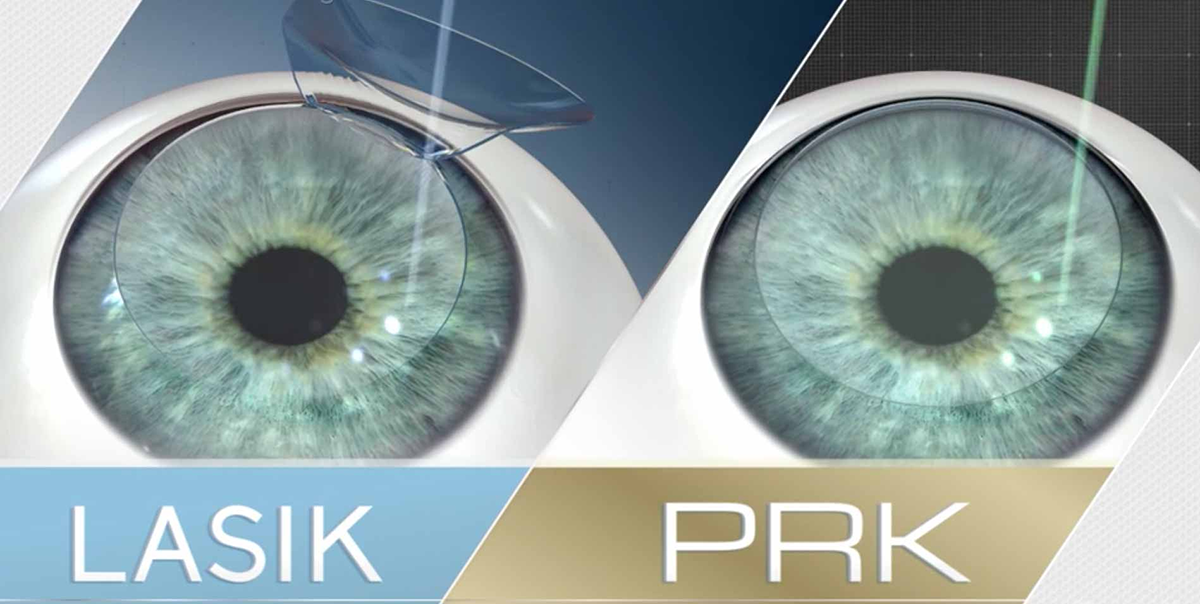People do a lot of research before they finalize their LASIK procedure. The technologies, the process, the center, and many other things are there to understand during the research phase. However, at your initial LASIK consultation, the surgeon answers all your queries in detail and leave no question unanswered.
We at Columbus LASIK Vision decided to make your primary research easy by explaining the most common LASIK terms.
For ease of Information access, we have also integrated a glossary into our website. Users can read the definition of the LASIK term throughout the website as they browse. All you need to do is hover the mouse over a LASIK term, and it will display easy-to-understand definitions of the respective term.
Click Here to browse through the complete LASIK Glossary.
LASIK Common Terms:
Ablate
Removing tissues while doing surgery, most of the time with lasers.
Acuity
Acuity is the level of vision sharpness; better the vision higher the level of acuity.
Best Corrected Visual Acuity (BCVA)
Measurement of the best vision correction can be achieved, such as glasses, as measured on the standard Snellen eye chart. For example, if your uncorrected eyesight is 20/200, but you can see 20/20 with glasses, your BCVA is 20/20
Bowman’s membrane
The layer of corneal tissue among the epithelium and the stroma.
Calibration
The process of quantifying and setting the laser to the needed energy for correct tissue removal. Some machines carve a PMMA plastic button to be measured by optical apparatuses, and others employ a 1 micron thick foil as a process of calibration.
Confrontational Visual Field
Your confrontational visual field has to do with how much you can see.
Corneal Epithelium
Soft surface tissue that covers the front of the cornea.
Corneal topography
A corneal topographer shines light onto the exterior of the eye and then measures the returned light to create a map of the cornea’s curvature as well as any abnormalities.
Corneal flap
A thin segment of tissue on the superficial of the cornea made at the initiation of LASIK surgery. Created with either a microkeratome or a femtosecond laser.
Custom LASIK
A process that lets your surgeon customize the LASIK procedure to your eyes. Custom LASIK uses a device called a wavefront analyzer to measure the way light travels through your eye.
Epithelium
the outmost layer of cells of the cornea and the eye’s first protection against infection.
Flap & Zap
Slang terminology for LASIK.
Ghost Image
A fainter second image of the thing you view.
Idiopathic
Because of some not known reason. A medical condition that appears suddenly with no apparent explanation is considered idiopathic.
Inflammation
The word for human body’s reaction to infection, trauma or a to a foreign substance. It is mostly associated with heat, redness, or swelling.
Intraocular pressure
pressure formed within the human eye because of the stress among the fluid inside the eye and the eye.
Iris
Colored membrane before of the eye’s lens that manipulates the dimensions of the pupil and therefore regulates the quantity of light getting into the eye.
Keratectomy
Corneal tissue removal by surgical procedure.
KeratoconjunctivitisSicca
Called Dry eye syndrome as well. Chronic lack of sufficient lubrication and moisture in the eye.
Keratoconus
Degenerative eye condition in which structural variations within the cornea make it thin and turns to a more conical shape than its normal gradual curve.
Laser Keratome
a laser device used to create a corneal flap.
Macular Degeneration
This is an ocular disease that harms the eye’s macula and produces irreversible loss of central vision, although peripheral vision is retained.
Macula
Part of the eye nears the center of the retina; the macula lets us see objects with great detail.
Mixed astigmatism
Irregular curvature of the eye’s surface (cornea) that causes focusing problems at both near and distant ranges.
Multifocal
Type of spectacle lens, intraocular lens (IOL) or contact lens design that includes more than one area through which the eye focuses.
Night Glare (Halos)
It happens when an individual sees a halo or starburst shape around lights at night.
Ocular Hypertension
An upsurge in the pressure inside the eye above the range is considered normal, without any detectable changes in vision or damage to the eye’s structures.
Ocular Migraine
A type of severe headache supplemented by various visual symptoms.
Over-Correction
A prospective side effect of laser vision correction that occurs when the eye over reacts to the laser treatment.
Pachymetry
The process of measuring corneal thickness, usually using an ultrasonic probe.
Pinquecula
An irregular development of tissue on the conjunctiva, the clear membrane that covers the white of the eye.
Plano
No refractive error indication.
Radial Keratotomy
Usually referred to as RK; a surgical procedure designed to correct myopia (nearsightedness) by flattening the cornea using radial cuts.
Refractive Errors
Imperfections in the focusing ability of the eye, for example, hyperopia, myopia, and astigmatism.
Regression
A backwards shift from the initial visual outcome, following refractive surgery.
Sclera
White colord part of human eye.
Slit lamp
A type of table top microscope for eye examinations.
Snellen
Visual Acuity Chart One of the charts used by eye care professionals to test vision.
Strabismus
A medical state in which the eyes are misaligned.
Subconjunctival Hemorrhage
An accumulation of blood beneath the conjunctiva, the clear membrane covering the white part of the eye.
Tear gland
Also known as lacrimal glands. Paired almond-shaped glands, single for each eye, which secrete the aqueous coat of the tear film.
Topography
To determine the shape of cornea, a topographical map of the surface of the eye.
Toric Lens
A contact lens or an intraocular lens implant that is designed to correct astigmatism.
Uncorrected visual acuity (UCVA)
The best possible vision a person can attain without corrective lenses.
Undercorrection
The result achieved when wanted change in refractive error is not completely achieved, following refractive surgery.
Uveitis
An irritation of one or more of the structures that make up the middle layer of the eye called the uvea.
VisX
Maker of argon floride excimer laser machineries VisX 2015, VisX 2020, and VisX STAR.
Visual acuity
Sharpness of vision, typically as measured with the use of a Snellen chart. 20/20 is considered usual visual acuity, however some people can see even better, such as 20/15 or 20/10.
Vitreous humor
The gel-like fluid in the main cavity of the eye behind lens and pupil that accounts for 80% or the eye’s volume.
Wavefront Analyzer
A specialized technology designed to create a 3-D map of the eye’s visual system.
yag laser
A type of laser using an infra red wavelength of 1064 nanometers. The laser material is neodymium Yttrium-Aluminum-Garnet.
If you are thinking of undergoing LASIK to get perfect vision and get rid of Glasses or Contact lenses, do not hesitate to consult. We will help you find out which LASIK procedure is the best suitable for you and guide you in detail about the pre-and post-surgery cautions.
Click here to book an appointment or call 1-866-600-3937.








